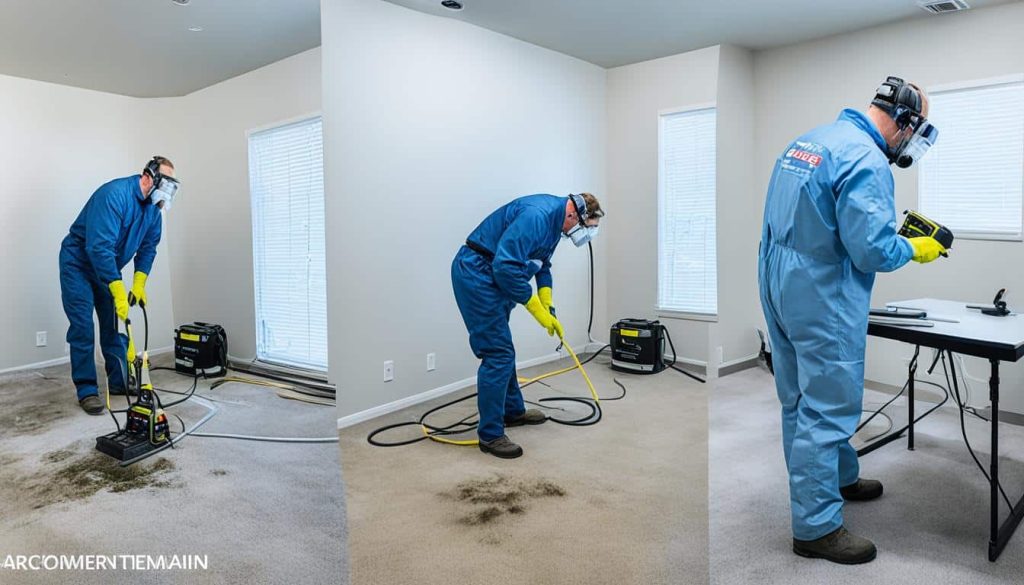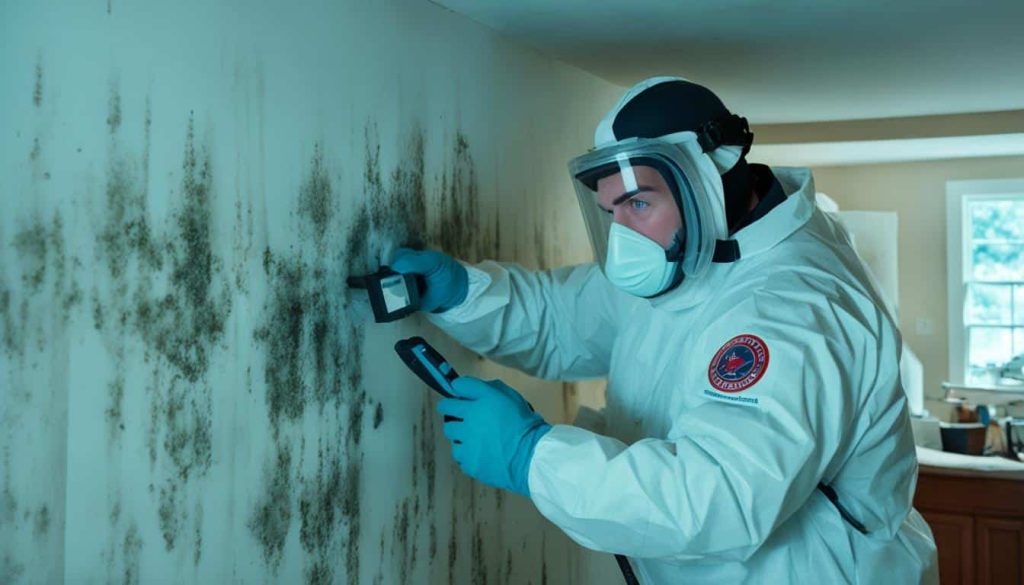In this article, we will talk about the Best Way to Remove Mold from your Home. Mold is an unwelcome guest in any home, not only because of its unsightly appearance but also due to the serious health risks it poses. In the past, homeowners and even some professionals attempted to remove mold using rudimentary methods like sanding and abrasive chemicals. While these methods might have removed visible mold, they often failed to address the root cause, leaving behind microscopic contamination and the perfect conditions for mold to return. Thankfully, modern mold remediation techniques have advanced significantly, offering more effective, safer, and longer-lasting solutions.
Array of Solutions, a trusted name in mold removal in Greenville South Carolina since 2007, stands ready to tackle your mold woes. With our expert mold inspection Greenville services and EPA-Registered credentials, we’re equipped to detect, remove, and prevent mold growth in your home or business.
Table of Contents
The Evolution of Mold Removal Techniques
Old Methods vs. New Technologies
In the early days of mold removal, the primary approach was to physically scrub away mold using sandpaper, wire brushes, or other abrasive tools. The idea was simple: remove the mold you can see, and the problem is solved. However, this approach was flawed for several reasons:
- Incomplete Removal: Surface cleaning techniques like sanding only removed the visible mold. Mold roots, or hyphae, often penetrated deeply into porous materials like wood, drywall, and fabrics, making it impossible to eliminate mold entirely through surface cleaning alone.
- Health Risks: The use of abrasive chemicals posed significant health risks. Harsh chemicals could irritate the skin, eyes, and respiratory system, and they often released volatile organic compounds (VOCs) into the air, contributing to poor indoor air quality.
- High Recurrence Rate: Because the root cause of mold growth (moisture and contamination in hard-to-reach places) was not addressed, mold often reappeared, leading to a cycle of cleaning, regrowth, and frustration.

Best Way to Remove Mold from your Home Remediation Techniques
Oxidative Chemistry: A Breakthrough in Mold Removal
Today, mold remediation has evolved into a science, utilizing advanced technologies to address both visible mold and hidden contamination. One of the most effective modern methods is oxidative chemistry. This technique involves using powerful oxidizing agents to break down mold at a molecular level, ensuring thorough removal from all surfaces, including those that are porous or hard to reach.
- Deep Penetration: Oxidative chemistry can penetrate deep into porous materials like wood, concrete, and drywall. By reaching the mold roots that traditional methods miss, it ensures that the mold is completely eliminated, reducing the chances of recurrence.
- Safe for Families: Unlike abrasive chemicals used in the past, modern oxidative agents are designed to be safe for use in homes. They break down into harmless byproducts, leaving no toxic residues behind.
- Environmentally Friendly: These advanced mold removal agents are also environmentally friendly, as they don’t release harmful chemicals into the environment. This makes them a safer choice for both your home and the planet.
Spectroscopy and Biostatic Inhibitors
In addition to oxidative chemistry, modern mold remediation often involves spectroscopy and biostatic inhibitors. Spectroscopy is used to analyze surfaces for mold contamination, ensuring that every trace of mold is identified and treated. This level of precision is crucial for a successful remediation process, as it leaves no room for mold to hide.
Biostatic inhibitors, on the other hand, are applied to surfaces after the mold has been removed. These inhibitors create an environment that is hostile to mold growth, effectively preventing mold from re-establishing itself. This proactive step is essential for maintaining a mold-free home long after the remediation process is complete.
Steps to Remove Mold Effectively
1. Identify the Source of Moisture: The first step in any mold removal process is to address the underlying cause: moisture. Without eliminating the source of moisture, any mold removal efforts will be temporary at best. This could involve repairing leaks, improving ventilation, or installing dehumidifiers to maintain a dry environment.
2. Quarantine the Affected Area: To prevent the spread of mold spores during the removal process, it’s important to quarantine the affected area. This involves sealing off the area with plastic sheeting and using negative air pressure to ensure that mold spores don’t escape into other parts of the home.
3. Wear Protective Gear: Mold remediation professionals always wear protective gear, including gloves, masks, and full-body suits, to avoid exposure to mold spores. If you’re attempting a small-scale mold removal yourself, be sure to take similar precautions.
4. Apply Oxidative Chemistry: Once the area is secure, the next step is to apply an oxidative chemical treatment to the affected surfaces. This should be done with specialized equipment that ensures deep penetration into all materials.
5. Use Biostatic Inhibitors: After the mold has been removed, apply a biostatic inhibitor to the surfaces to prevent future mold growth. This is a crucial step for long-term mold prevention.
6. Monitor and Maintain: Even after remediation, it’s important to regularly monitor your home for signs of mold and moisture. Regular maintenance, such as cleaning, inspecting, and maintaining proper humidity levels, will help ensure that mold doesn’t return.

Conclusion: Trust the Experts
While DIY methods may seem appealing, the best way to remove mold from your home is to trust the experts who use advanced techniques like oxidative chemistry, spectroscopy, and biostatic inhibitors. These modern methods not only remove mold more effectively but also ensure that it stays gone, providing a safer, healthier environment for you and your family. For comprehensive mold remediation services, contact Array of Solutions and let our team of professionals help you achieve a mold-free home.
